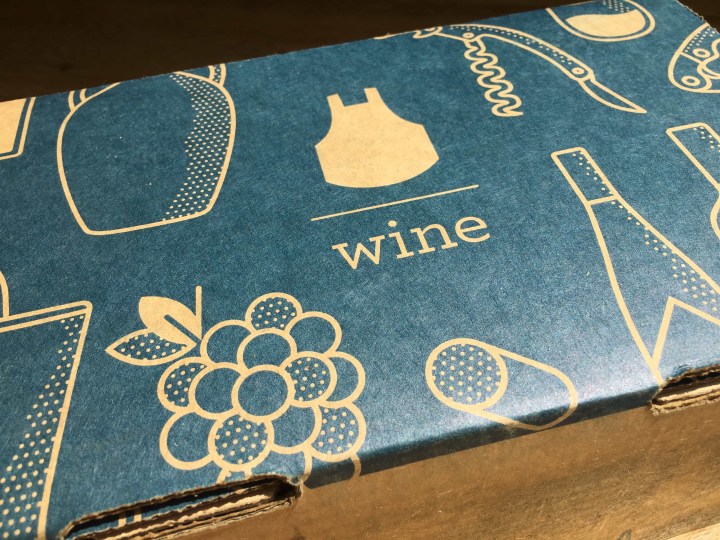
Blue Apron Wine is a subscription for people who love trying new wines as much as they love great food. You may be familiar with the Blue Apron Meal Delivery Kit subscription, which sends boxes of fresh ingredients to make exciting meals at home. The wine subscription is separate from the meal subscription, but it’s designed to complement it.
Here’s how it works: every month, for about $11 per bottle ($65.99/month, including shipping and tax), Blue Apron sends you 6 bottles of wine, plus tasting notes and pairing recommendations. The wines are selected to pair perfectly with the meals in the Blue Apron kits. The bottles are 500 ml, or 2/3 the size of a standard bottle, which, in addition to being adorable, means that you and your dining partner can enjoy your entire bottle with your meal without regretting that additional glass needed to finish a standard-sized bottle.
Blue Apron pairs with wineries around the world to bring a wide range of new and interesting wines to you each month. I love wine, and I love food, and I love everything about the idea of this subscription.
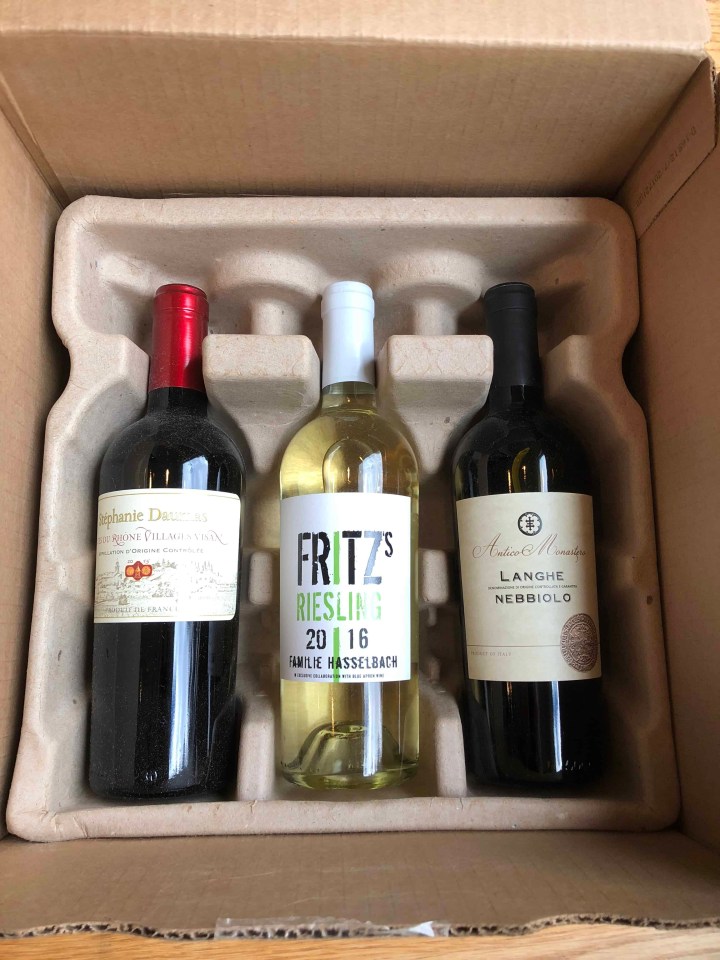
The new packaging is great and keeps everything snug and secure. Keep in mind that someone 21+ will need to sign for it. Everything is in great shape when it arrives, and the packaging remains, happily, recyclable cardboard.
Blue Apron Wine allows you to select your wines–you can go all white, red, or mix it up. I do wish there were sparkling wine options occasionally. This month, I decided to go all-European in my wine selections. It’s incredibly easy to switch out your bottles.
DEAL: You can try out your first box of Blue Apron dinners for $30 off with this link.
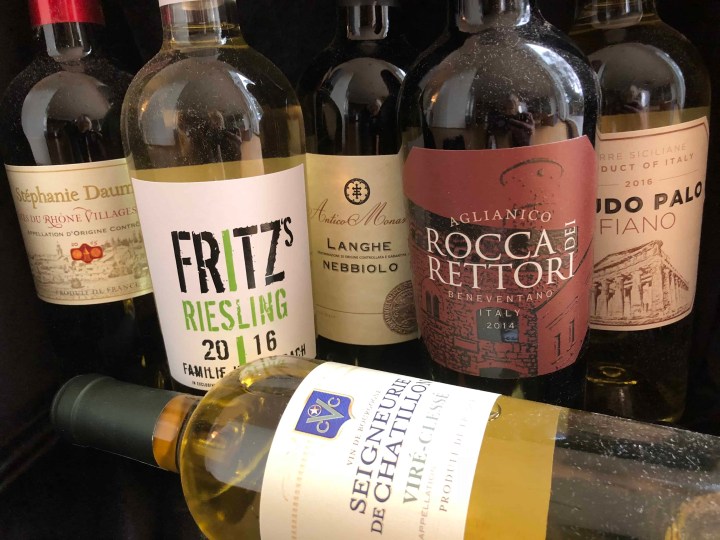
If you’re wondering what a 2/3-sized bottle looks like, here is one of the bottles with a standard-sized bottle next to it. You’ll get about 3 1/2 standard glasses in a bottle, or a generous pour plus a top-off each if you’re with a partner.
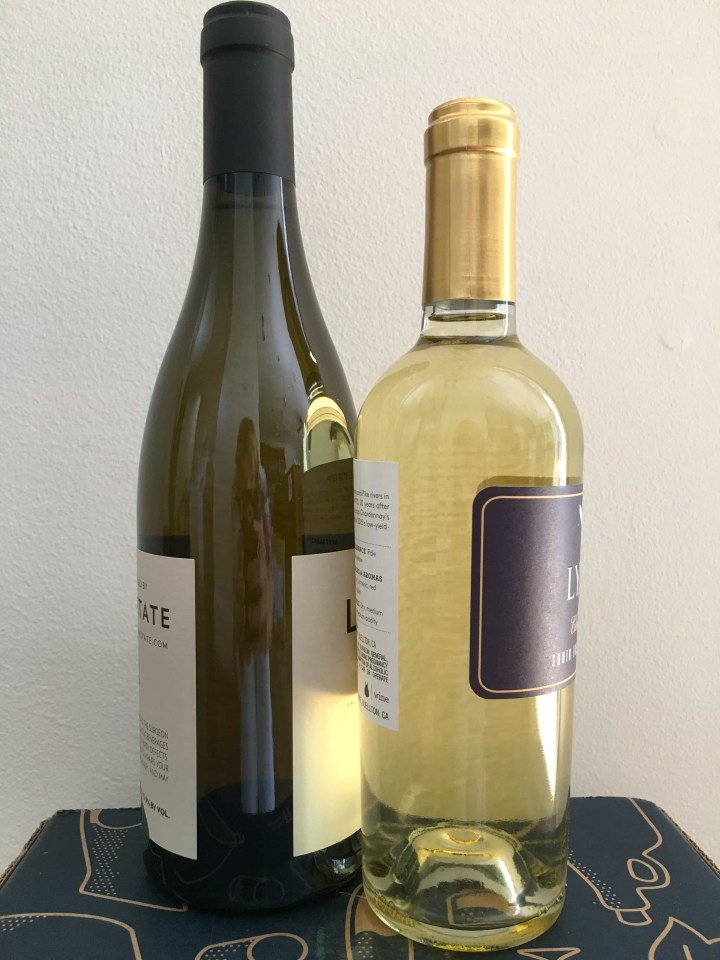
Each box comes with a great collection of tasting notes. Blue Apron tells you a little bit about the winery and how the bottle was made, plus the region at large. Because, come on, you didn’t REALLY know where the Central Coast was, did you? The info details the color, body, and structure of the wine, and also gives some thoughtful food pairings for each bottle. The info is terrific – wine is not scary, and tasting it should be fun and informative. Data is your friend.
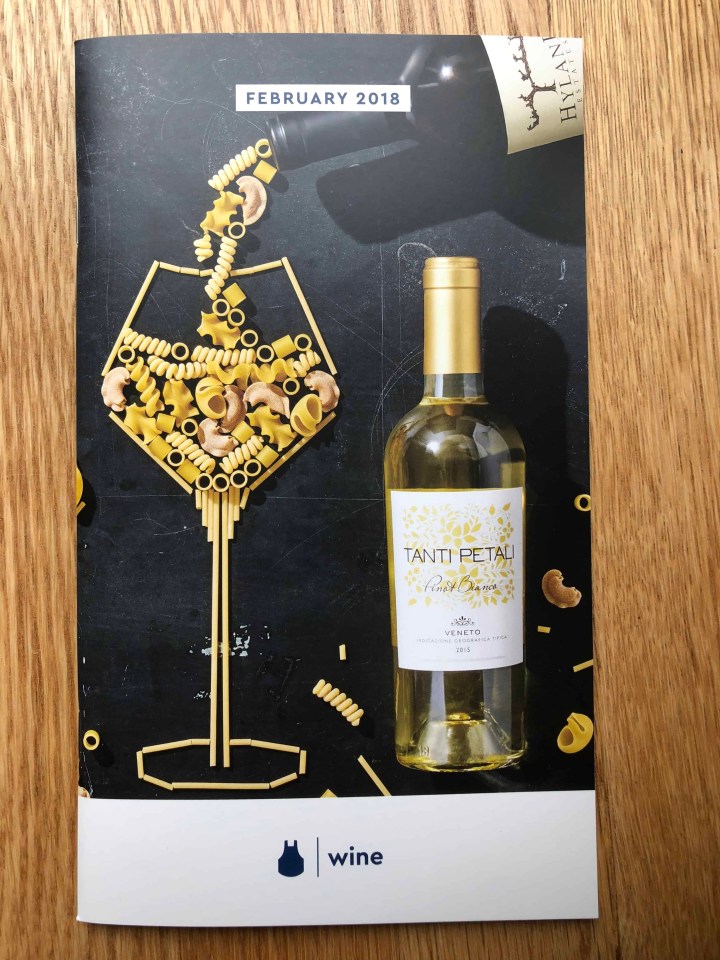
It’s February! This is the time of year when it sinks in that there is still a lot of winter to go. Depending on your need for sunshine, that could be terrifying or satisfying news. Me, I like a reason to keep my body in sweater-mode. So grab a fuzzy blanket, a good novel, and let’s drink some wine.

After last month’s red wine extravaganza, we went back to a mix of white and reds, and started light with 2016 Feudo Palo Fiano from Sicily, Italy.

I’ve never had Fiano wine before! That is my favorite thing about my Blue Apron wine subscription–I get to try new varietals all the time, without worrying about spending the right amount of money for a good version of what I’m trying. Fiano grapes grow in southern Italy, especially the Sicily region. They are described in the tasting notes as a zesty, fruity white. The Feudo Palo is light gold in the glass, with a more medium body than you would expect for the color. It has a nice, fresh nose of white flowers and citrus. I didn’t taste the sweeter fruits in this wine that the tasting notes identified–to me, it was all floral zest. Fiano sometimes benefits from aging, and that might have brought out some of the fruitier flavors and tempered the acid. As it was, the Feudo Palo reminded me of a weighty Pinot Grigio, especially in the sharp finish. I actually enjoyed this wine, because I love a dry white, but if you’re expecting a fruit-salad-style Sauvignon Blanc, this might not be for you. We had it with tilapia tacos, and it was perfect. Drink it cold and remember that spring will come back!
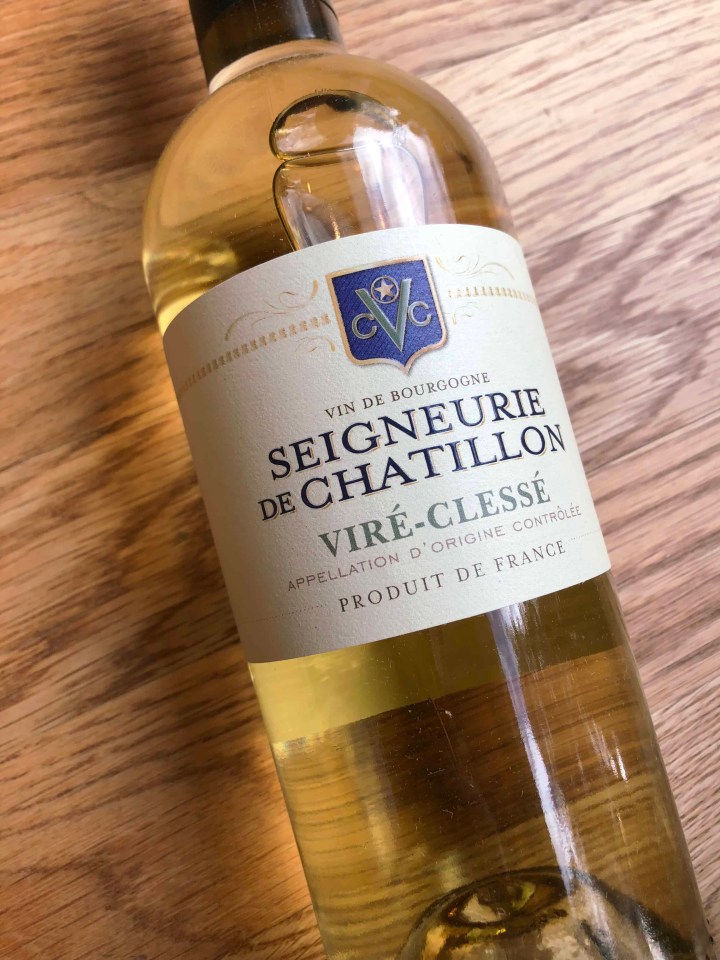
Our second white is the 2015 Seigneurie de Chatillon White Burgundy, from Vire-Clesse, in Burgundy, France. Normally, you can expect a true White Burgundy to be austerely dry, with bright acid and underpinnings of stone. Vire-Clesse’s versions, however, emphasize the fruit, and are often rounder and more expressive than a typical White Burgundy.
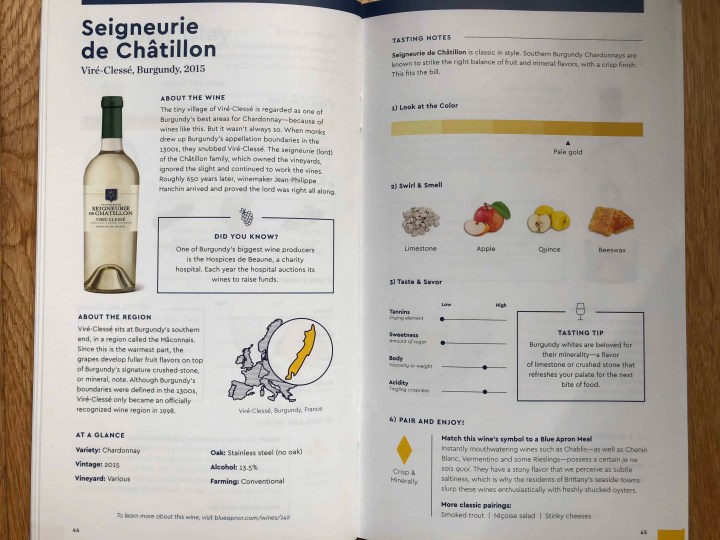
The Seigneurie de Chatillon is a beautiful gold color in the bottle and glass (much more vibrant than pictured in the tasting notes). It has a restrained nose of flinty apple. This wine, is, of course, made from Chardonnay, but it’s aged in steel instead of oak, so you don’t get those big vanilla/butter/cakey flavors that you would in a California Chard. This wine is pretty reserved in flavor at first, to the point where I thought it might have been past its prime. As the wine warms up in the glass, however, you start to taste those underpinnings of apple and pear, with a firm backbone of stone to keep everything in line. I’d say this wasn’t quite as fruity as I was expecting, but it was still a nice, quiet wine that went well with our roasted chicken and veg. I’d drink this close to room temperature to really experience the flavors.
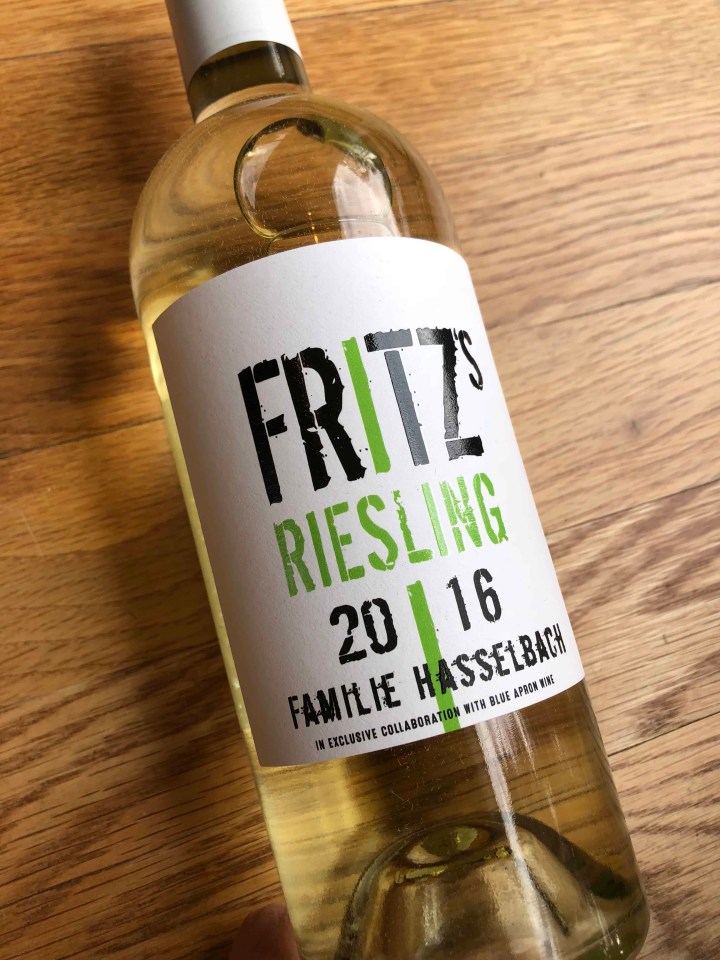
Our last white is the amusingly-eponymous 2106 Fritz’s Riesling, from Rheinhessen, Germany. This is a fairly well-known mass-market Riesling, so I’m not entirely sure what “exclusive collaboration with Blue Apron Wine” means. You can definitely buy this in a wine shop. But you know what, I wouldn’t, because I have lingering memories of drinking garbage sweet Riesling in college and I just don’t drink it much anymore. But I’m game to try whatever comes my way, so, with some side-eye to the hip marketing of this wine, I was in.
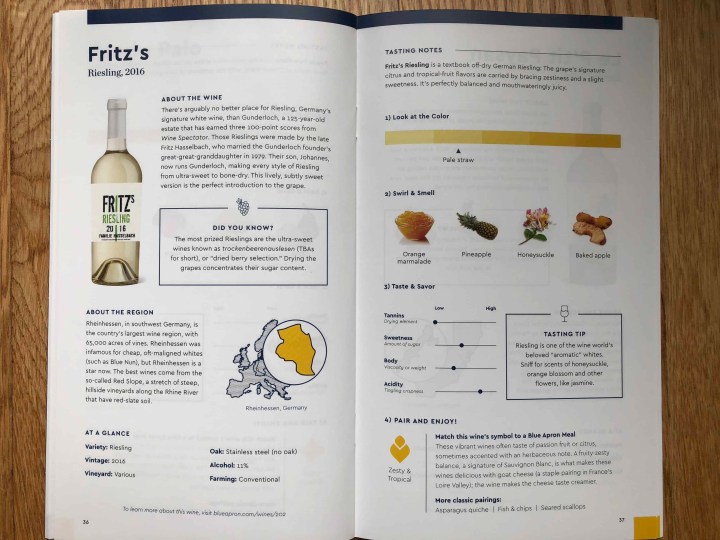
Fritz’s is light gold in the glass with a strong nose of honeysuckle and fruit. The body is very light. The first flavors here are definitely sweet, a peachy/pear/jam mix, but the sweetness is balanced by a big dose of acid to end with a very clean finish. I think the balance here is key–there’s no doubt this is a sweet wine, but it’s not JUST sweet, and I think it’s really quite pleasant. I think it would be a lovely wine to drink at a barbecue, or with friends over Chinese takeout and Netflix like we did. With a low ABV of just 11%, this is a wine you can drink plenty of without getting sloppy. Very cold for this wine, I think.

Back to my beloved Rhone Valley, France for our first red, the 2015 Stephanie Daumas Cotes du Rhone Villages Visan. As we talked about in January, the Villages designation means that this wine will be of good quality and representative of the region. Shout out to a female winemaker, too.
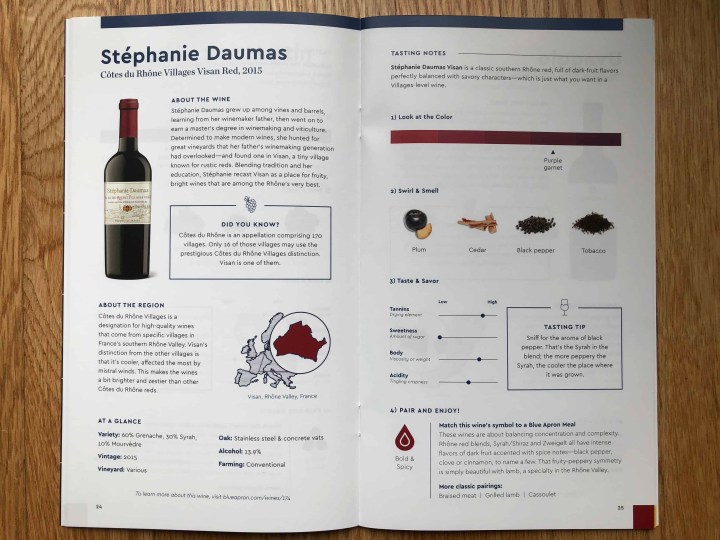
The Stephanie Daumas is, of course, a blend, made up of majority Grenache, with a big dose of Syrah and a little Mourvedre thrown in for depth. It is dark red/violet in the glass, with a beautiful nose of red fruit and spice. The dark fruit flavors lead, but they’re quickly overtaken by the spicy flavors of pepper and woodsmoke. The finish is long and spicy, with tannins that hit you in the back of the jaw. This is a bigger wine than I was expecting, but it’s tasty, and it would go well with any red meat or dark stew. We had it with cheeseburgers (because, Syrah) and the flavors went beautifully. We drank this at cool room temperature, but if the tannins bother you, you could let it sit out in the glass and they’ll moderate. Thumbs up here.
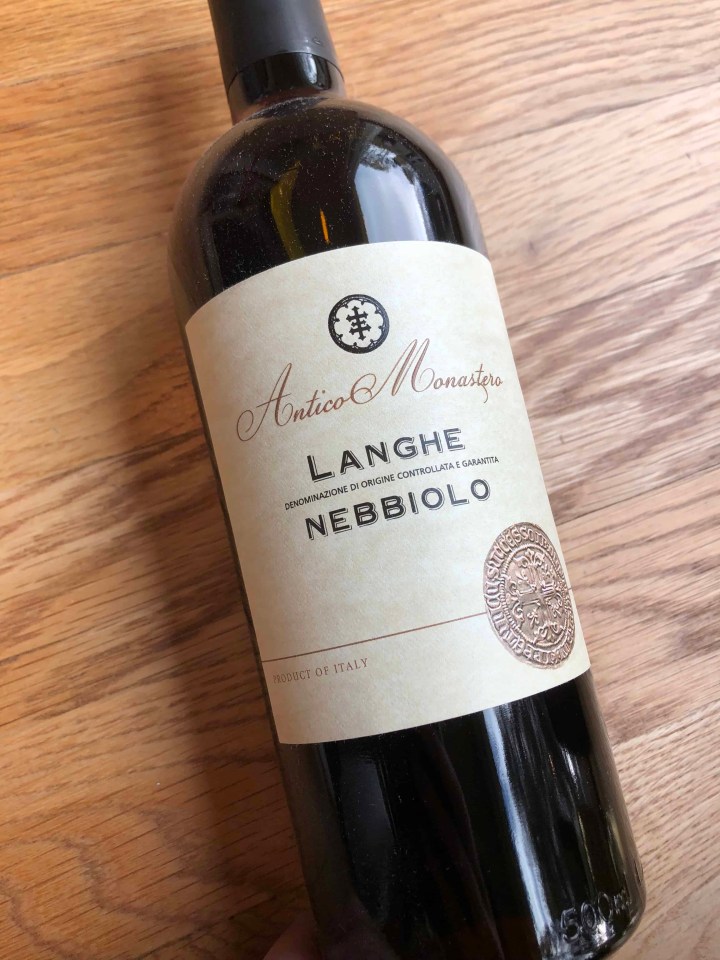
Back to (Langhe) Italy for the 2016 Antico Monastero Nebbiolo. I have a soft spot for a good Italian red, and Nebbiolo is usually a fun one. If you haven’t had it, think of a Sangiovese wearing a Pinot Noir dress. It has a beautiful lightness and bright fruity nose like a Pinot Noir, but then you sip it and it’s all dark libraries and tannins and leather.
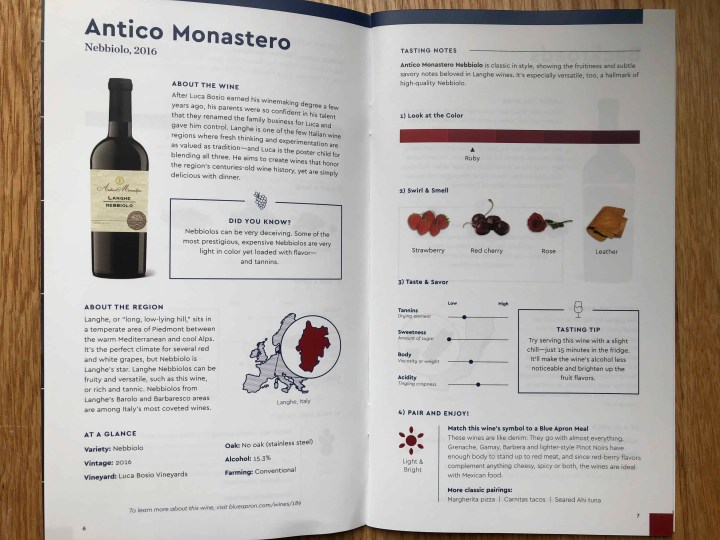
As expected, this is bright violet in the glass and swirls around like that Pinot Noir at the party. The nose is gorgeous, red fruit and floral notes, like Valentine’s Day in a bottle. The flavor, though, has none of those berry elements. The rose is still there for a second before it’s swallowed up by the leather and tannins. Even if you like a tannic wine, this one might make you look like a cartoon character who ate a lime. The finish is long and tannic (duh), with an alcohol burn in the back. The tannins softened a bit in the glass as it sat out. I don’t normally fuss with decanting, but you might want to pour this one in glasses early and let them sit while you cook. We had it with Blue Apron pizza, which was a fine match. Start it with a bit of a chill so it doesn’t get too warm as it airs out.
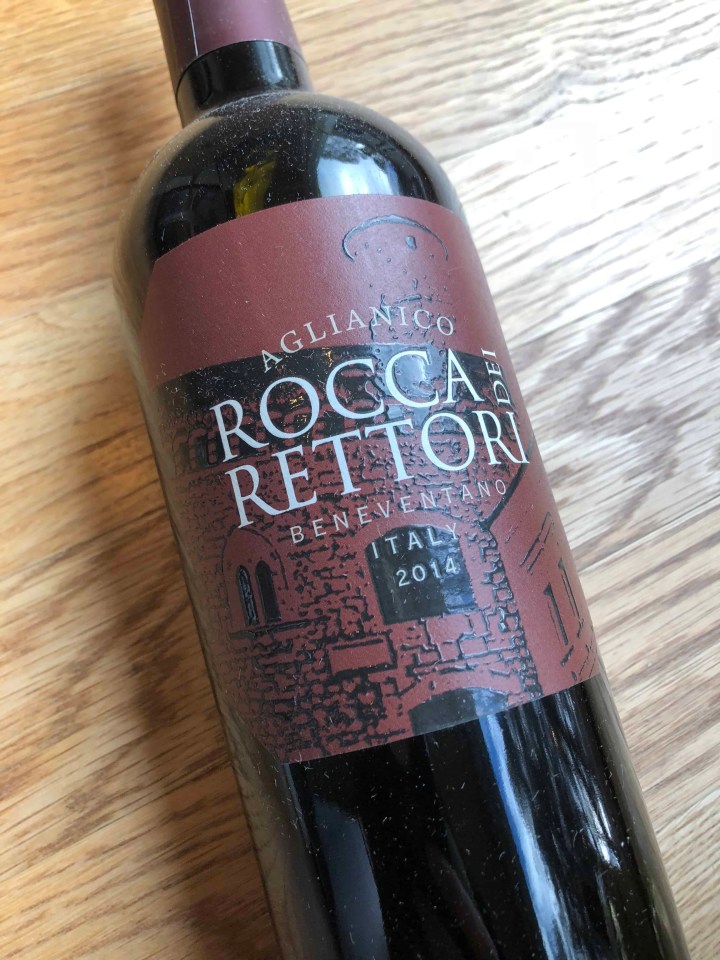
Our last wine is also from Italy; Beneventano this time for the 2014 Rocca dei Rettori Aglianico. I don’t think I’ve had Aglianico, but you can think of it as Nebbolio’s sophisticated older sister. According to my reading, the best Aglianico is meant to be aged ten to twenty (!) years, but there’s also a version of it that is fruitier and meant to be drunk now. That is what we seem to have here in the Rocca dei Rettori.
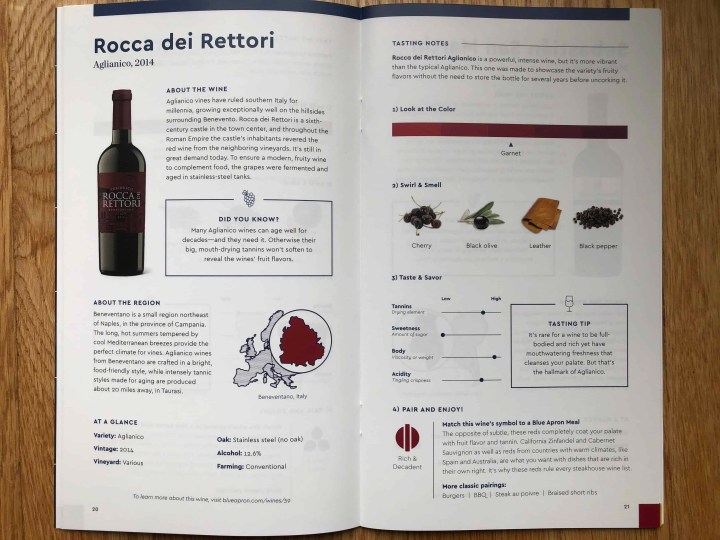
The wine is a nice medium red, with a very heavy body. This wine coats your mouth to start, but it has a fairly bright finish with an acidic zip that clears things out. The nose is dark fruit and spice, and the flavor leans hard on the olivey/peppery notes. The tannins are chewy but not overpowering like the Nebbolio’s were, and the whole effect is powerful, but nimble. This is more balanced than I expected from the weight, and we really enjoyed it with flank steak. It would be AMAZING with pork ribs. Cool room temperature worked for us.
Our tour of Europe was so fun! We really got to try a huge variety of wine, including some new ones for me.
Oh, if you need some pasta after all those Italian wines, Blue Apron has given you a very authoritative-looking napkin sketch of Italy that I’m sure you’ll find helpful.
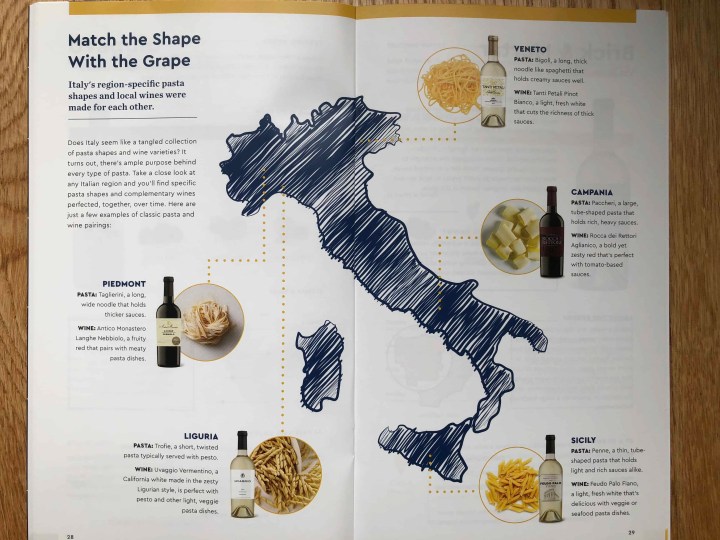
By the way, Blue Apron has an easy system for pairing its wines and its food subscriptions, somewhat like you might have seen in nicer grocery stores — the wines are categorized by type (crisp & minerally, plush & fruity, etc.) and then that symbol shows up on the food recipes. Pair any wine of the recommended type to the food, and voila — you have a great meal!
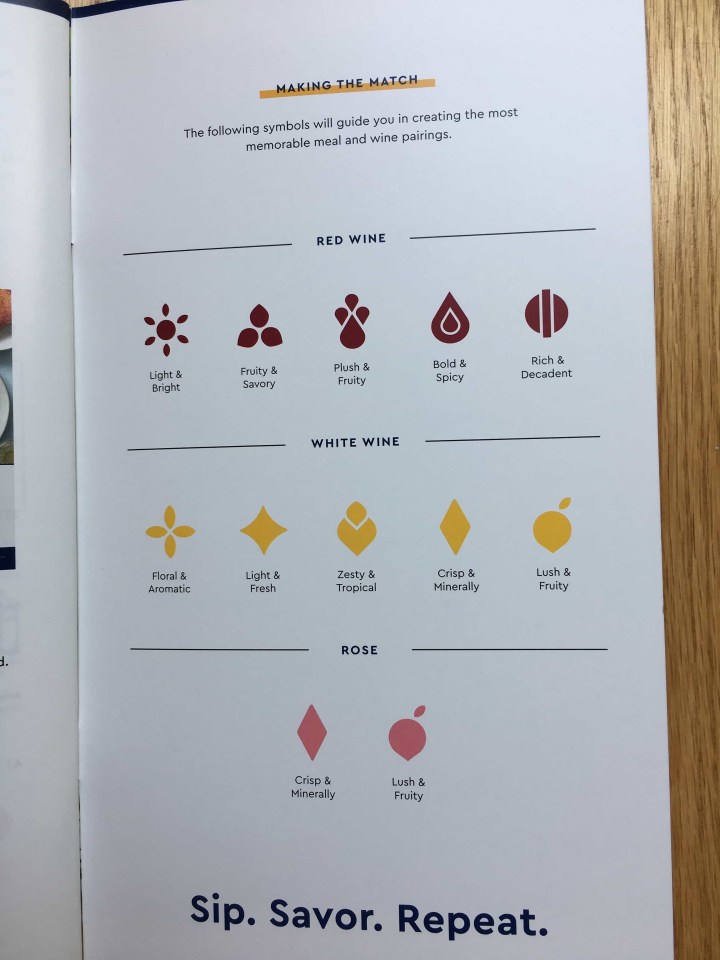
Have you tried Blue Apron Wine? What is your favorite pasta shape to eat with wine? Tell us in the comments below!




Comments